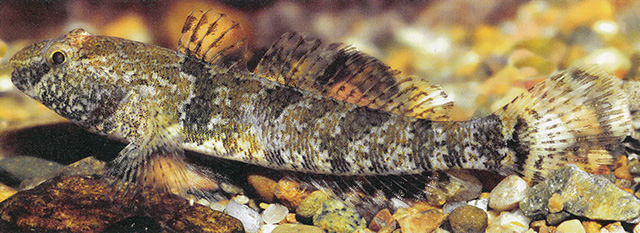| Gobiidae (Gobies), subfamily: Gobiinae |
| 9 cm SL (male/unsexed) |
|
benthopelagic; freshwater; brackish |
| Euorpe: Black Sea basin; Maritza and Struma drainages in eastern Aegean basin. In Danube, present up to about Vienna, invasive since 1970s, now reaching upstream to southern Germany. In South Bug and Dniepr native far upriver. Introduced to North America in 1991 through ballast of ships. |
|
|
| Inhabits a variety of slow-flowing or still waters from estuarine to small, slow flowing premontane streams; usually in dense vegetation or coarse rocks, and often very abundant in backwaters and lakes, breeds in reservoirs and channels. Preys on benthic invertebrates. Spawns for the first time at 1-2 years, usually for 1-2 seasons only, in April to August. Females may spawn more than once during the season and males guard the eggs that are deposited in cavities. Larvae and juveniles are benthic. It is invasive in Danube and Rhine where reportedly, the spreading was due to canalization of main river and reservoirs or slow-flowing waters created by hydroelectric plants (Ref. 59043). |
|
Least Concern (LC); Date assessed: 01 January 2008 Ref. (130435)
|
| harmless |
Source and more info: www.fishbase.org. For personal, classroom, and other internal use only. Not for publication.

